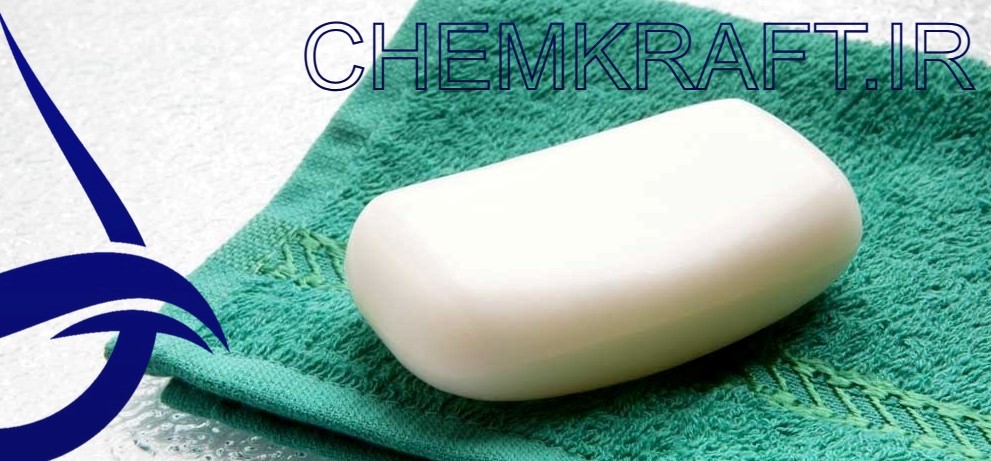1. Introduction and Its Importance in Soap Making
Saponification, the chemical process of converting fats and oils into soap, has been practiced for centuries and remains a fundamental technique in soap making. This article delves into the fascinating world of it, specifically exploring the role of caustic soda (sodium hydroxide) in the process. Understanding the chemistry behind it is crucial for soap makers, as it allows them to create high-quality soaps with desirable properties. By examining the chemical reaction, factors affecting its efficiency, safety considerations, different methods, and applications in various industries, we can gain a comprehensive understanding of how saponification with caustic soda works.
1. Introduction
1.1 What is it?
Saponification may sound like a complicated word, but it’s actually a fancy way of describing the process of making soap. In simple terms, it is the chemical reaction that occurs when fats or oils are combined with a caustic substance, like caustic soda (sodium hydroxide) or caustic potash (potassium hydroxide).
1.2 Historical Significance
Believe it or not, saponification has been around for centuries! People have been making soap using this process since ancient times. Think about it – even our ancestors realized the importance of cleanliness and hygiene. They probably didn’t have fancy fragrances or moisturizing additives in their soap, but the basic principle of saponification remained the same.

1.3 Importance of it in Modern Soap Making
Fast forward to the present day, and saponification is still a crucial step in soap making. The process allows us to transform fats or oils into soap, which is an essential product for maintaining personal hygiene. Plus, by customizing the ingredients and adding various scents and moisturizers, we can create soaps that not only clean but also make us feel pampered. So, it continues to play a vital role in the soap-making industry.
2. The Role of Caustic Soda in the Process
2.1 Understanding Caustic Soda (Sodium Hydroxide)
Caustic soda, also known as sodium hydroxide, is a key player in the this process. It’s a highly alkaline substance that comes in the form of white, solid pellets or flakes. While it may sound intimidating, caustic soda is widely used in soap making because of its ability to break down fats and oils.
2.2 Chemical Properties of Caustic Soda
Caustic soda is a strong base, which means it has a high pH level. This alkaline nature is what makes it effective in this process. When mixed with water, caustic soda dissociates into sodium ions (Na+) and hydroxide ions (OH-). These hydroxide ions are what react with the fats or oils to create soap.
2.3 Why Caustic Soda is Essential
Caustic soda acts as a catalyst, speeding up the reaction between fats or oils and the hydroxide ions. Without caustic soda, the process wouldn’t occur or would be incredibly slow. It helps to break down the fats and oils into their individual fatty acid molecules, which then react with the hydroxide ions to form soap molecules. So, caustic soda is like the fairy godmother that turns the plain fats and oils into lovely, cleansing soap.
3. Understanding the Chemical Reaction
3.1 Overview of the Reaction
Now, let’s dive into the nitty-gritty of the saponification reaction. When caustic soda (sodium hydroxide) combines with fats or oils, a chemical reaction occurs. The hydroxide ions (OH-) from the caustic soda react with the fatty acids in the fats or oils, resulting in the formation of soap molecules and glycerol (also known as glycerin).
3.2 The Role of Caustic Soda in the Reaction
Caustic soda acts as a catalyst in the saponification reaction. It helps to speed up the reaction by providing the hydroxide ions needed to react with the fatty acids. These hydroxide ions break the fats or oils into fatty acid molecules, which then bond with the sodium ions (Na+) from the caustic soda to form soap molecules.
3.3 Products Formed
During this process, two main products are formed – soap molecules and glycerol. Soap molecules are the result of the fatty acids bonding with the sodium ions, while glycerol is a byproduct of the reaction. Glycerol is a valuable ingredient used in various industries, including cosmetics and pharmaceuticals.
4. Factors Affecting the Rate and Efficiency with Caustic Soda
4.1 Influence of Temperature
Temperature can have a significant impact on the speed and efficiency of the saponification process. Generally, higher temperatures accelerate the reaction, but excessive heat can also cause issues like overheating or unevenly saponified soap. Finding the right balance is key to achieving the desired results.
4.2 Effects of Concentration and Ratio of Caustic Soda
The concentration and ratio of caustic soda to fats or oils can affect the outcome of saponification. Using the correct amount of caustic soda is crucial for achieving the desired texture and properties in the soap. Too little can result in a soft or greasy soap, while too much can make it harsh and drying.
4.3 Impact of Stirring and Agitation
Stirring and agitation play an important role in saponification by ensuring a thorough mixing of the caustic soda and fats or oils. Proper stirring helps in evenly distributing the hydroxide ions, which leads to a more efficient and consistent saponification process. So, don’t be shy to give your soap mixture a good stir!Industry
7.2 Saponification in the Cosmetic Industry
7.3 Saponification in the Food Industry
8. Fun Facts About Saponification – Did You Know?
8.1 Soap Bubbles are Essentially Saponification in Action
8.2 Saponification Reactions are Responsible for That “Fresh Rain” Smell
8.3 Saponification is Not Limited to Just Soap Making
5. Safety Considerations and Precautions when Working with Caustic Soda
5.1 Importance of Safety Measures in Caustic Soda Handling
Saponification can be a fun and fulfilling chemistry experiment, but it’s important to prioritize safety when working with caustic soda. Caustic soda, or sodium hydroxide, is a highly corrosive substance that can cause severe burns if mishandled.
5.2 Protective Gear and Equipment
To protect yourself from caustic soda, it’s crucial to wear the right gear. Safety goggles and gloves are your best friends in this adventure. Goggles shield your eyes from any splashes or fumes, while gloves provide a barrier between your skin and the caustic soda solution. Don’t forget to wear long sleeves and pants to minimize direct contact.
5.3 Emergency Procedures and First Aid for Caustic Soda Accidents
Accidents happen, even to the most cautious chemists. If you do come into contact with caustic soda, act quickly. Rinse the affected area with cool running water for at least 15 minutes. Remove any contaminated clothing while rinsing. If the burn is severe or covers a large area, seek immediate medical attention. Remember, safety should always be a top priority!
6. Different Methods and Techniques for Saponification with Caustic Soda
6.1 Cold Process
The cold process method of saponification is like a slow and steady chemistry dance. It involves mixing oils and fats with a caustic soda solution and allowing them to react naturally over time. This method requires patience as the soap takes several weeks to cure and harden before it’s ready to use.
6.2 Hot Process
If you’re more of an instant gratification person, hot process saponification might be your jam. This method involves heating the mixture of oils, fats, and caustic soda to speed up the saponification process. The result? Soap that’s ready to use in just a few hours! It’s perfect for those who can’t wait to lather up.
6.3 Continuous Process
Continuous process saponification is all about efficiency. It’s a continuous flow method where the reactants are continuously fed into a reactor and the soap is continuously withdrawn. This process allows for large-scale soap production and is commonly used in industrial settings. It’s like a well-oiled machine, quite literally!
7. Exploring the Applications and Benefits of Saponification in Various Industries
7.1 In the Soap Industry
Soap is the OG of saponification. The soap industry relies on saponification to transform fats and oils into cleansing bars that keep us squeaky clean. From fancy artisanal soaps to everyday bathing bars, saponification is the magic behind it all.
7.2 In the Cosmetic Industry
The cosmetic industry embraces saponification for more than just soap. It’s a key process in creating luxurious creams, lotions, and balms. Saponification helps to emulsify and stabilize ingredients, ensuring your skincare products are smooth and delightful.
7.3 In the Food Industry
Believe it or not, saponification has its place in the food industry too! It’s used to produce glycerol, a compound that has many applications, including as a food additive. So the next time you indulge in a tempting treat, remember that saponification might have played a role in making it extra delicious.
8. Fun Facts – Did You Know?
8.1 Soap Bubbles are Essentially Saponification in Action
Remember blowing soap bubbles as a kid? Well, those mesmerizing spheres are a result of saponification at work. When you blow air through a soap film, it stretches and forms a bubble. The soap molecules arrange themselves to create a thin layer that traps air inside. It’s a mini saponification show right before your eyes!
8.2 Saponification Reactions are Responsible for That “Fresh Rain” Smell
Ever wondered what gives that pleasant smell after a rain shower? Saponification might be part of the answer. When rainwater interacts with certain compounds on the ground, saponification reactions can occur, releasing volatile substances that contribute to the distinct aroma we associate with fresh rain.
8.3 Saponification is Not Limited to Just Soap Making
While soap making is the most well-known application of saponification, it’s not the only game in town. Saponification reactions have found their way into various industries, from pharmaceuticals to textiles. So next time you’re enjoying a silky lotion or cozying up in a soft garment, remember that saponification had a role to play in creating those comforts.
In conclusion, exploring the chemistry behind saponification and its relationship with caustic soda provides valuable insights into the art and science of soap making. By understanding the chemical reaction, considerations for safety, and various methods employed, soap makers can create exceptional soaps that meet their desired specifications. Saponification with caustic soda not only has a rich historical significance but also continues to find applications in numerous industries. As we continue to uncover new techniques and advancements in soap making, the future of saponification and caustic soda holds exciting potential for innovation and improvement in soap production and beyond.











